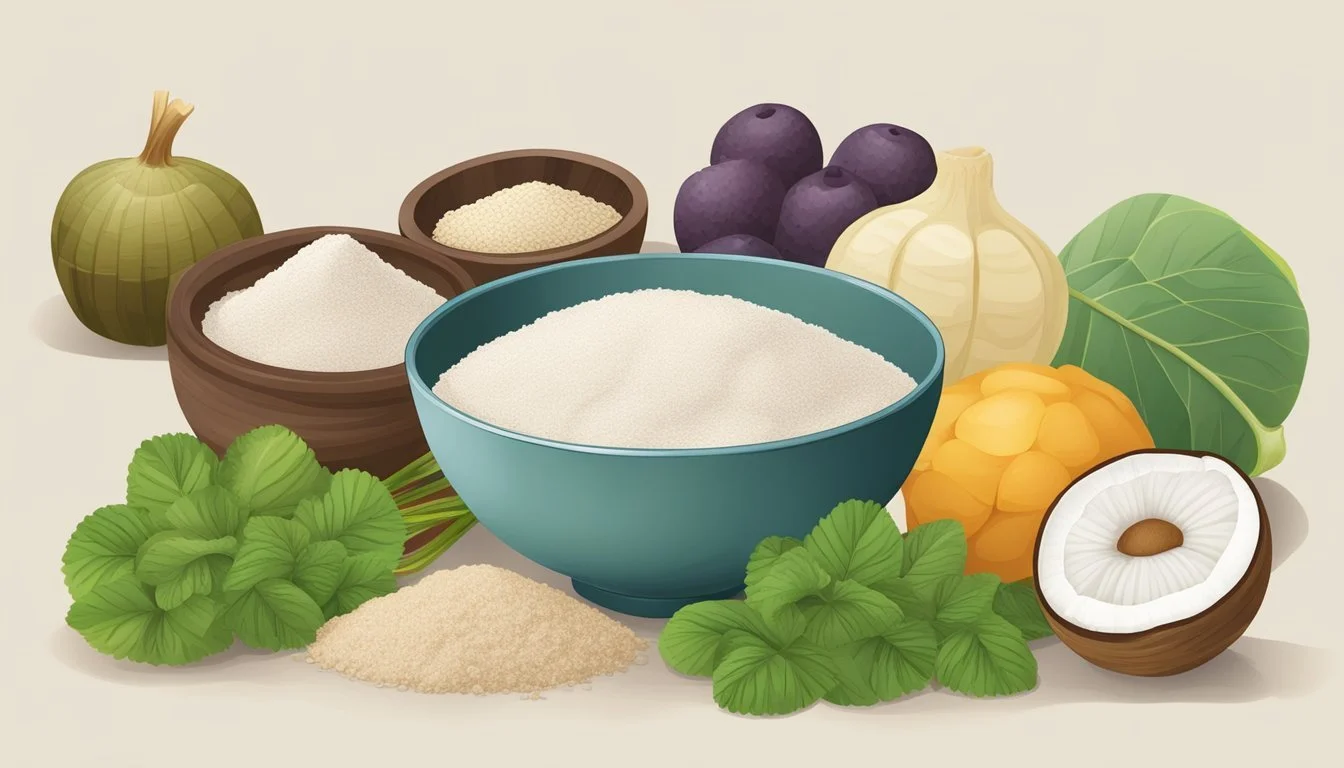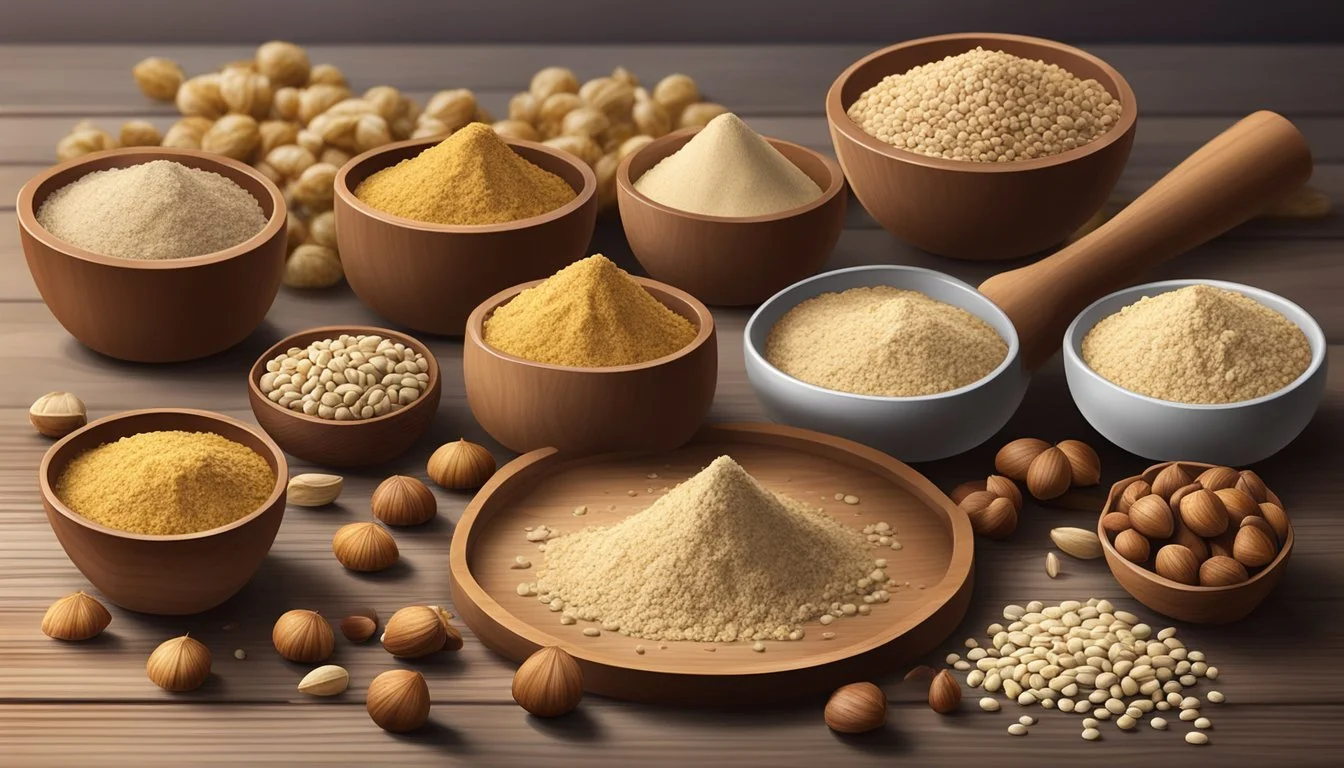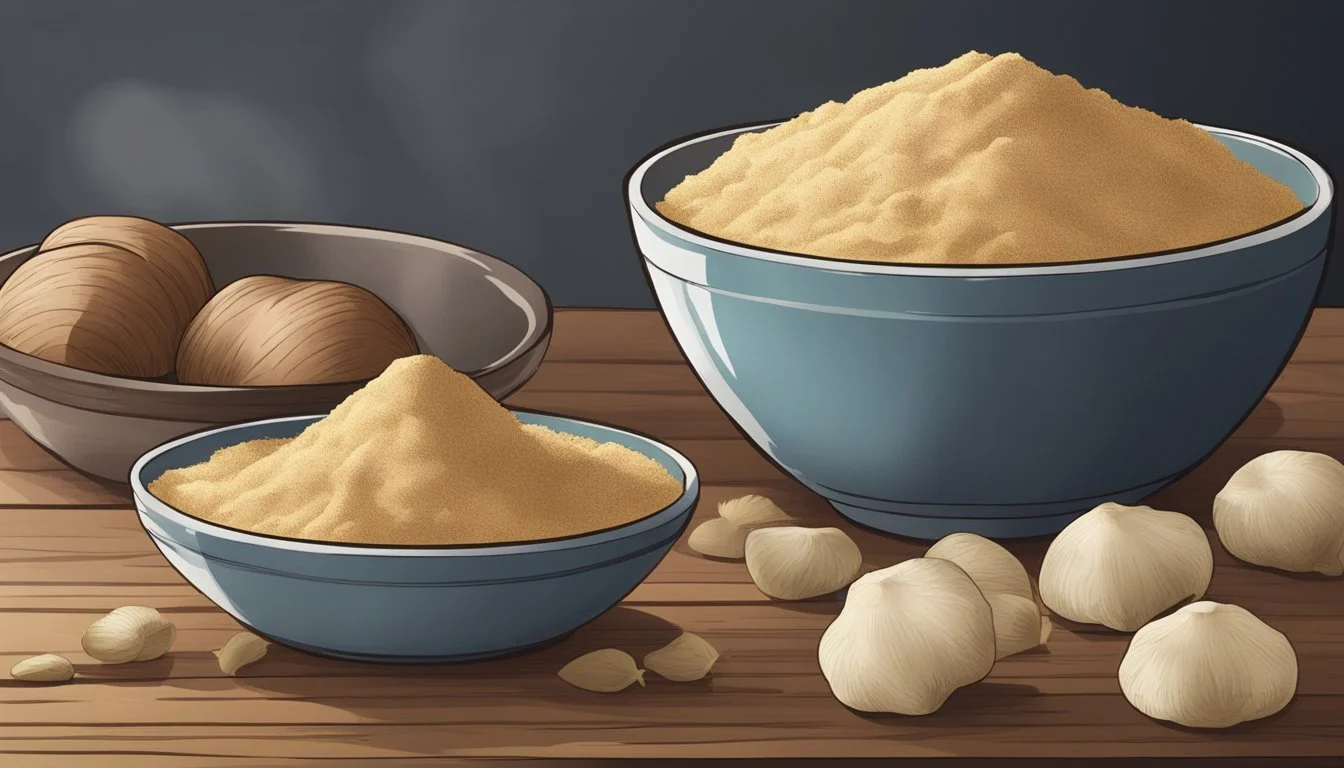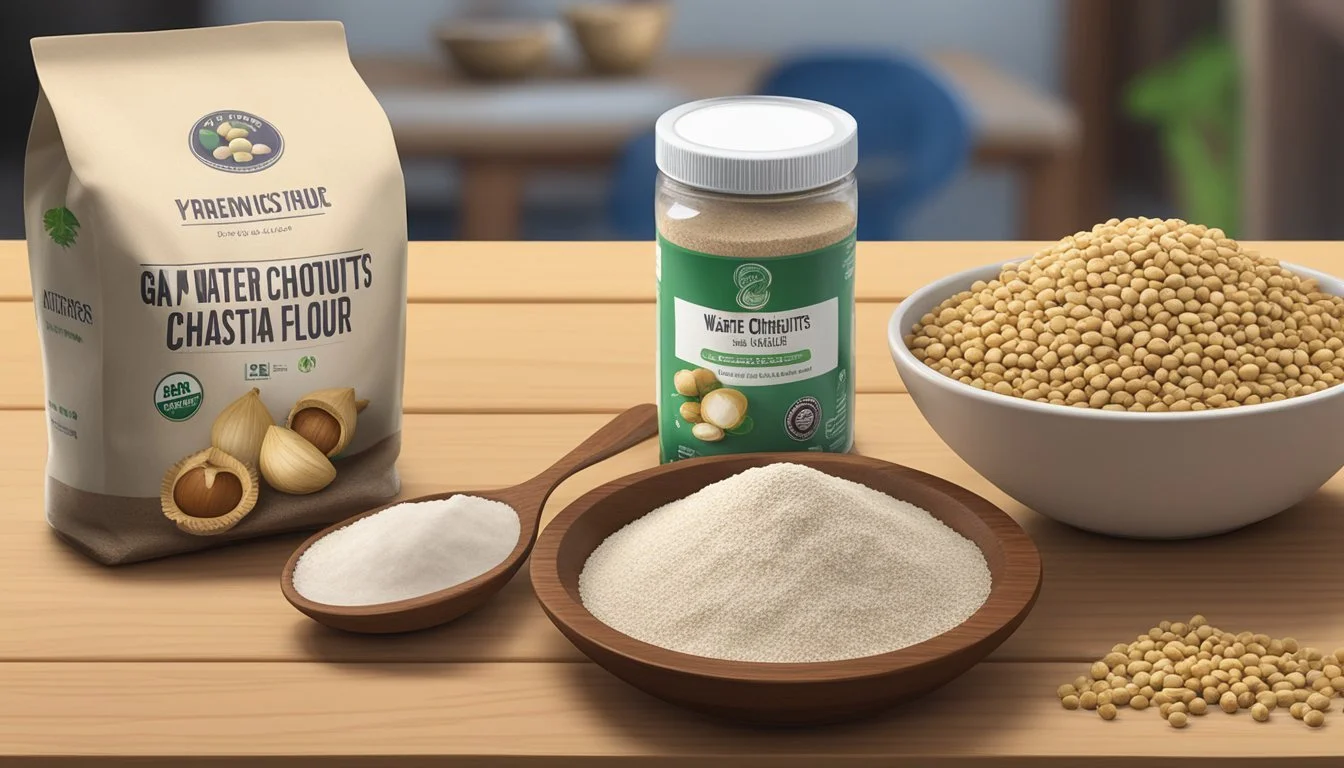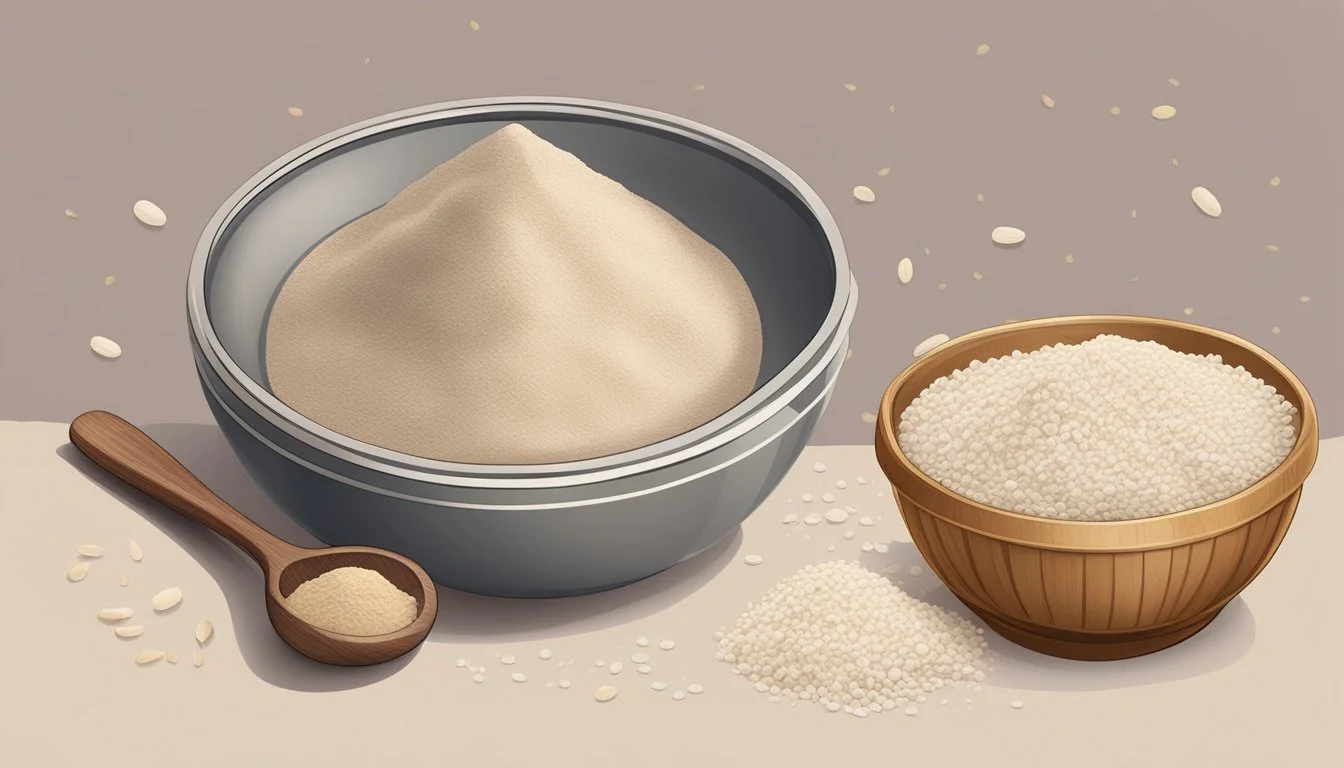Water Chestnut Flour Substitutes
Best Alternatives for Cooking and Baking
For those looking to replace water chestnut flour in their recipes, several excellent alternatives can help you achieve the desired texture and taste. Cornstarch, for example, is a fantastic substitute that works particularly well as a thickening agent. It binds with water to create a smooth consistency, making it ideal for soups, stews, and sauces.
Another versatile option is hazelnut flour, made from raw hazelnuts. This grain-free, gluten-free nut flour is perfect for baking and can also be used in breading chicken or fish. Additionally, for those desiring a crunchy texture similar to water chestnuts, chopped jicama or bamboo shoots can be substituted in a 1:1 ratio.
For various culinary applications, white turnips, canned water chestnuts, and daikon can also be used in place of water chestnut flour. Each of these substitutes brings unique characteristics to your dishes while maintaining a balance of flavor and texture.
Understanding Water Chestnut Flour
Water chestnut flour is derived from the water chestnut, an aquatic vegetable belonging to the Cyperaceae family.
The water chestnut's tuber is ground to produce this fine, gluten-free flour.
It has a slight nutty and sweet flavor, making it a unique ingredient in both savory and sweet dishes.
Water chestnut flour is particularly nutritious.
Rich in fiber, this flour helps support digestive health.
It also contains essential minerals such as potassium and manganese.
Key Features:
Flavor: Slightly nutty and sweet
Texture: Fine, powdery
Nutritional Value: High in fiber, contains essential minerals
This flour is commonly used in Asian cuisine, especially for making batter for frying, and as a thickening agent in sauces.
Due to its fine consistency, water chestnut flour mixes easily with liquids without forming lumps.
Usage Tips:
Thickening Agent: Use it in soups and sauces.
Baking: Substitute in gluten-free baking recipes.
Frying: Ideal for making light and crispy coatings.
Water chestnut flour is versatile and can be incorporated into multiple recipes.
Its unique properties make it a valuable ingredient in gluten-free and high-fiber diets.
Knowing how to effectively utilize water chestnut flour can enhance the texture and nutritional profile of your dishes.
Why Substitute Water Chestnut Flour?
There are several reasons to consider substitutes for water chestnut flour. One primary reason is availability. Water chestnut flour may not be readily available in all grocery stores or regions, making it difficult for some to obtain.
Allergies can also necessitate the need for substitutes. While rare, some individuals might have an allergic reaction to water chestnuts or their flour. In such cases, using a substitute ensures safety without compromising the dish.
Taste and texture also play a role in substitution. Water chestnut flour has a unique taste and a specific crunchy texture. Certain recipes might require a different flavor profile or consistency, making alternative options more suitable.
Substitutes can vary greatly in their affordability. Water chestnut flour can sometimes be expensive, particularly when it needs to be sourced from specialty stores. Cheaper alternatives like cornstarch or almond flour can be more budget-friendly.
Tables and lists help in organizing information:
Attributes Water Chestnut Flour Common Substitutes Availability Limited in some regions Cornstarch, Hazelnut Flour, Almond Flour Allergies Possible for some individuals Almond Flour (nut allergy), Cassava Flour Taste Mild, slightly sweet Varies: nutty in hazelnut flour, neutral in cornstarch Texture Crunchy when cooked Varies: smooth with cornstarch, grainy with nut flours Affordability Moderate to high Generally more affordable alternatives
Using a variety of substitutes ensures that cooking and baking can adapt to different needs, whether due to dietary restrictions, cost, or other personal preferences.
Nut-Based Flour Substitutes
Nut-based flours offer excellent alternatives to water chestnut flour, bringing unique flavors and nutritional benefits. They are ideal for various culinary needs, including baking and thickening.
Almond Flour
Almond flour is made from blanched almonds that have been ground into a fine powder. This flour is known for its slightly sweet and nutty flavor, making it a favorite in gluten-free baking.
Nutritional Benefits: Almond flour is rich in fiber, vitamin E, and magnesium, contributing to its nutritional value. It also has a moderate amount of calories, supporting a healthier diet.
Culinary Uses: It’s excellent for making pastries, bread, and even as a thickening agent in recipes. Its fine texture provides a desirable consistency to various dishes.
Hazelnut Flour
Hazelnut flour is produced by grinding raw hazelnuts into a fine meal. This flour has a distinct nutty and sweet flavor, enhancing baked goods and savory recipes alike.
Nutritional Benefits: Hazelnut flour is a good source of fiber, magnesium, and copper. These nutrients support various bodily functions, including bone health and energy production.
Culinary Uses: Hazelnut flour works well in cookies, cakes, and breading for meat or fish. Its crunchy texture also adds an interesting element to smoothies and yogurt.
Coconut Flour
Coconut flour is made from dried coconut meat that's been ground into a fine powder. This flour has a naturally sweet taste and a high fiber content.
Nutritional Benefits: Coconut flour is not only high in fiber but is also low in calories compared to other nut flours. Its high fiber content aids in digestion and provides satiety.
Culinary Uses: It’s ideal for baking because of its absorbent nature, requiring more liquid in recipes. Coconut flour is suitable for making pancakes, muffins, and even as a thickening agent in soups and stews.
Each of these nut-based flours provides unique characteristics beneficial for a variety of culinary applications. They offer gluten-free alternatives while adding distinct flavors and textures to your dishes.
Root Vegetable Flours
Root vegetable flours offer a variety of benefits and can serve as excellent substitutes for water chestnut flour. These flours, derived from tubers, often carry unique textures and nutritional profiles that make them valuable in cooking and baking.
Cassava Flour
Cassava flour is made from the tuberous root of the cassava plant. It is known for its high starch content, which gives it a slightly sweet taste and a fine, crisp texture. This flour is gluten-free, making it suitable for those with gluten sensitivities.
Cassava flour can be used in a 1:1 ratio as a substitute for water chestnut flour in many recipes. Its versatility allows it to be used in baking, breading, and thickening sauces. It is also rich in potassium, which is beneficial for maintaining healthy blood pressure levels.
One notable feature of cassava flour is its ability to provide a light and fluffy consistency in baked goods. This flour's neutral flavor makes it an excellent candidate for both savory and sweet dishes, from cookies to breaded chicken.
Lotus Root Flour
Lotus root flour is derived from the root of the lotus plant. It is less common than cassava flour but is equally nutritious and versatile. This flour has a mild, slightly sweet flavor and a smooth, fine texture, ideal for delicate recipes.
High in dietary fiber and vitamins, lotus root flour is also a good source of potassium, supporting heart health. It works well in recipes that require a light, airy quality, such as cakes and pastries.
In addition to its use in baked goods, lotus root flour can be employed as a thickening agent in soups and sauces, maintaining a smooth consistency without altering flavors dramatically. Its unique properties make it an interesting and valuable addition to a variety of culinary applications.
Grain-Based Alternatives
For those seeking substitutes for water chestnut flour, grain-based alternatives such as cornstarch and wheat flour are excellent options. These ingredients offer unique properties that can enhance various culinary applications.
Cornstarch
Cornstarch is a popular choice for thickening sauces, soups, and stews. It has a neutral taste, making it suitable for both sweet and savory dishes.
Cornstarch binds with water to create a smooth and glossy texture, perfect for stir-fries and gravies. It’s also commonly used in baking to enhance the texture of cakes and cookies. When substituting water chestnut flour with cornstarch, it's best to use a 1:1 ratio, ensuring the consistency of the recipe remains unchanged.
Wheat Flour
Wheat flour is another versatile substitute for water chestnut flour, especially in baked goods. It provides structure and elasticity due to its gluten content, which is essential for items like bread and pastries.
In terms of flavor, wheat flour adds a mild, wholesome taste that complements both sweet and savory recipes. For thickening purposes, such as in sauces or soups, it’s recommended to use slightly more wheat flour than water chestnut flour, about 1.5 times the amount. Adjustments may be needed to maintain the desired texture and consistency of the dish.
Other Crunchy Additions
When looking for substitutes for water chestnut flour that offer a pleasing crunch in various dishes, options like jicama, Jerusalem artichokes, and bamboo shoots stand out. Each of these alternatives can add texture and flavor to salads, soups, and other culinary creations.
Jicama
Jicama, also known as the Mexican turnip, is an excellent crunchy addition to salads and other fresh dishes. It has a slightly sweet and nutty flavor that complements many oriental dishes. When sliced thin, jicama retains a crispy texture, making it a great substitute for water chestnut in stir-fries and fresh preparations.
Incorporating jicama slices into salads not only adds crunch but also a refreshing taste. They work well with citrus dressings or can be simply enjoyed with lime and chili powder. Compared to water chestnuts, jicama is lower in calories and high in essential nutrients like Vitamin C.
Jerusalem Artichokes
Jerusalem artichokes, also known as sunchokes or earth apples, are versatile tubers that bring a distinctive crunch to various dishes. They resemble ginger roots and can be used raw or cooked. Their nutty, sweet flavor makes them suitable for both savory and slightly sweet recipes.
When raw, Jerusalem artichokes add a satisfying crunch to salads and can be thinly sliced or julienned for texture. When cooked, they soften slightly but still maintain a firm bite, making them perfect for soups and stews as a water chestnut substitute.
Bamboo Shoots
Bamboo shoots are commonly used in Asian recipes and are celebrated for their crisp texture. Fresh bamboo shoots can be found in many stores, and they add a mild, slightly sweet flavor to dishes, making them a perfect addition to oriental dishes.
These shoots can be sliced into salads or stir-fries to provide a crunchy element that mirrors the texture of water chestnuts. By adding bamboo shoots to your dish, you also gain dietary fiber, potassium, and other essential nutrients conducive to a balanced diet.
Sourcing and Preparing Substitutes
When looking for alternatives to water chestnut flour, consider options that are readily available in local grocery stores or specialty markets.
Jicama: Sourced in most Asian supermarkets. Peel the outer skin and slice thinly for use in recipes.
Cornstarch: Available in any grocery store. Suitable as a thickening agent in soups, stews, and sauces.
Almond Flour: Found in health food sections. Ideal for baking and can be substituted in a 1:1 ratio with water chestnut flour.
Hazelnut Flour: Like almond flour, this is found in health food aisles and is grain-free. Use it for baking or breading items like chicken and fish.
For those seeking fresh alternatives, consider these options:
Radishes: Locate in grocery stores. Slice thinly to maintain crunch, useful in stir-fries and salads.
White Turnips: Easy to find in the produce section. Peel and slice to replace water chestnuts.
Asian markets are excellent sources for:
Fresh Water Chestnuts: Often sold in Asian supermarkets. Peel and slice them before incorporating into your recipes.
Canned Water Chestnuts: Also available in Asian markets. These are peeled and ready to use, offering convenience.
Whether cooking or baking, these substitutes offer flexibility and availability, ensuring that you can replicate the desired texture and flavor of water chestnut flour in your culinary creations.
Incorporating Substitutes in Recipes
When substituting water chestnut flour in recipes, there are several alternatives to consider, each with unique qualities suited for different dishes.
Cornstarch is a versatile thickening agent. It binds well with water, enhancing the texture of soups, stews, and sauces.
Almond Flour can be an excellent choice for baking. It works well in savory dishes like breaded chicken or fish.
Hazelnut Flour offers a grain-free, gluten-free option ideal for those with dietary restrictions. Use it in baked goods or to add a nutty flavor to smoothies.
For stir-fries and other Asian dishes, bamboo shoots and jicama make great crunchy substitutes. Bamboo shoots are more tender but still provide a good crunch.
Jicama's crisp texture is perfect for salads and spring rolls, maintaining its crunch even after prolonged cook times.
Here's a quick reference table for incorporating these substitutes:
Substitute Best Used In Notes Cornstarch Soups, Stews, Sauces Thickening agent Almond Flour Baking, Breaded Dishes Nutty flavor, gluten-free Hazelnut Flour Baking, Smoothies Grain-free, gluten-free Bamboo Shoots Stir-Fries, Asian Dishes Tender texture, good crunch Jicama Salads, Spring Rolls Crisp, maintains crunch
Fresh ginger can also be paired with these substitutes to add zesty and aromatic flavors, enhancing the overall taste of savory dishes.
In salads, radish slices and celery are other crunchy alternatives that can replicate the texture of water chestnuts. Each substitute brings its own unique profile to recipes, offering flexibility and creativity in cooking.

